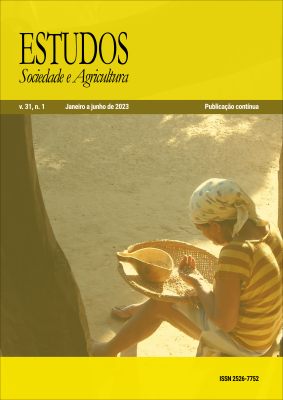The prestige structure of the residents in the reconstruction of the "time of cotton"
DOI:
https://doi.org/10.36920/esa31-2_01Keywords:
cotton, “moradores” system, prestige structureAbstract
After conducting ethnographic research on farms in the semi-arid region of Ceará, we identified common symbolic forms of thinking among the peasants who resided there that comprise what we define as a prestige structure, namely the reconstruction of the social memory of these peasants about their experiences of partnership in the cotton economy. Within their symbolic system they construct a structure of emotions based on the social conditions derived from contemporary rural experience, most notably the “prestige” they had during what they call the cotton era. In this way, we emphasize the role of the economy of symbolic goods in maintaining lasting relationships of dependence, rather than poverty, dependence and submission (which has been frequent among historians of economics). Through interviews and informal conversations as part of participant observation of contemporary rural work, we were able to capture the residents' social memory of the cotton era and the partnership relationships which produce honorable images of their condition in their memories, along with a complex worldview in which they combine the achievements of the present with characteristic elements of traditional domination. This ethnographic research, along with theoretical contributions from the sociology of Bourdieu and the economic history of the semiarid region, permits a discussion of the prestige structure found among the residents (more precisely, how it was shaped, and its contradictions and disintegration) by examining the complex relationships that constitute this social formation.
Downloads
Downloads
Published
Issue
Section
License
Copyright (c) 2023 Edgar Braga Neto

This work is licensed under a Creative Commons Attribution 4.0 International License.
Authors who publish in this journal agree to the following terms:
a) Authors maintain the copyright and grant the journal the right of first publication, with the work simultaneously licensed under the Creative Commons Attribution License which allows the sharing of the work with acknowledgment of authorship and initial publication in this journal.
b) Authors are authorized to take additional contracts separately, for non-exclusive distribution of the version of the work published in this journal (eg publish in institutional repository or as a book chapter), with acknowledgment of authorship and initial publication in this journal.
c) Authors are allowed and encouraged to publish and distribute their work online (eg in institutional repositories or on their personal page) at any point before or during the editorial process, as this can generate productive changes, as well as increase the impact and citation of published work (See The Effect of Free Access).






